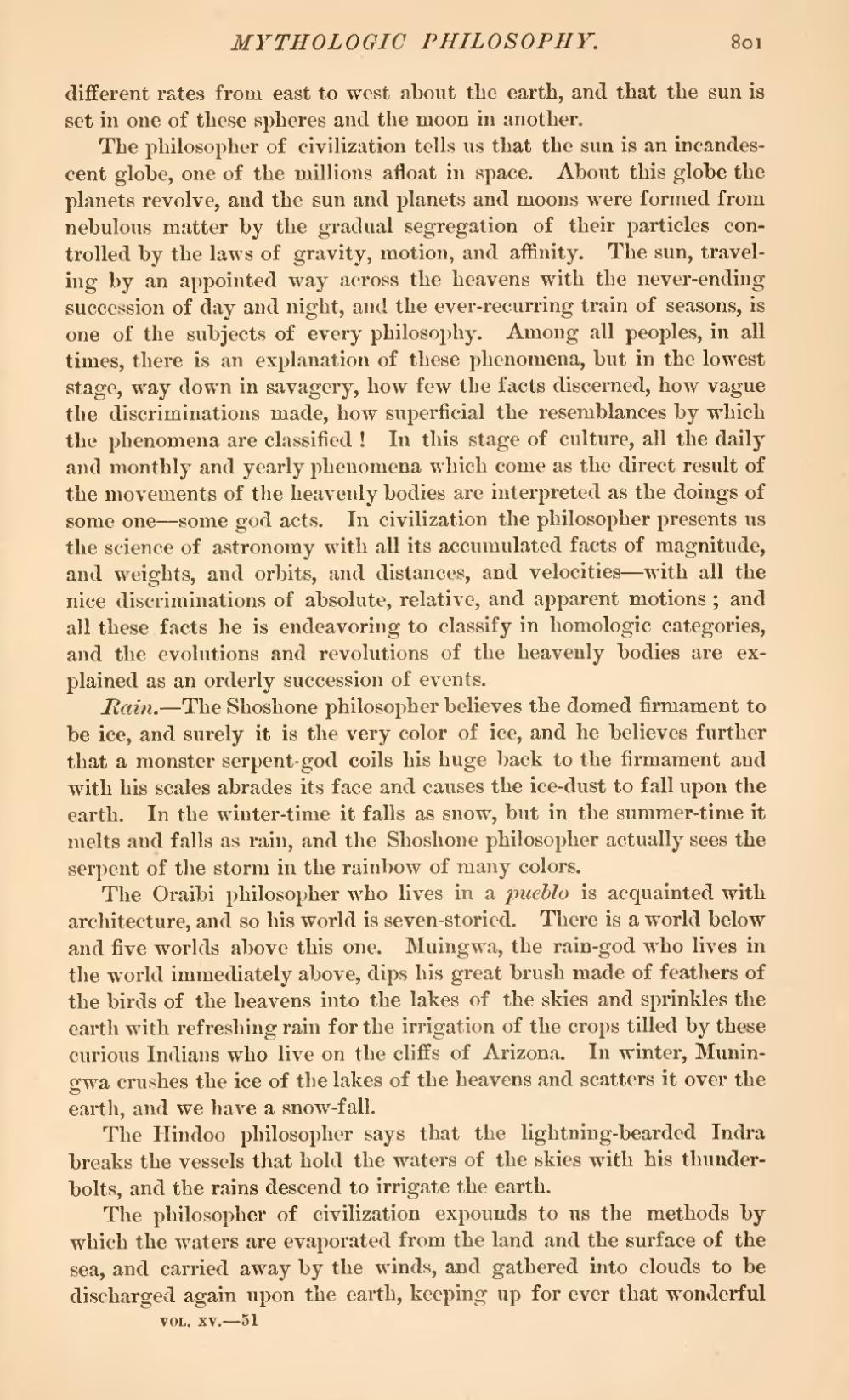different rates from east to west about the earth, and that the sun is set in one of these spheres and the moon in another.
The philosopher of civilization tells us that the sun is an incandescent globe, one of the millions afloat in space. About this globe the planets revolve, and the sun and planets and moons were formed from nebulous matter by the gradual segregation of their particles controlled by the laws of gravity, motion, and affinity. The sun, traveling by an appointed way across the heavens with the never-ending succession of day and night, and the ever-recurring train of seasons, is one of the subjects of every philosophy. Among all peoples, in all times, there is an explanation of these phenomena, but in the lowest stage, way down in savagery, how few the facts discerned, how vague the discriminations made, how superficial the resemblances by which the phenomena are classified! In this stage of culture, all the daily and monthly and yearly phenomena which come as the direct result of the movements of the heavenly bodies are interpreted as the doings of some one—some god acts. In civilization the philosopher presents us the science of astronomy with all its accumulated facts of magnitude, and weights, and orbits, and distances, and velocities—with all the nice discriminations of absolute, relative, and apparent motions; and all these facts he is endeavoring to classify in homologic categories, and the evolutions and revolutions of the heavenly bodies are explained as an orderly succession of events.
Rain.—The Shoshone philosopher believes the domed firmament to be ice, and surely it is the very color of ice, and he believes further that a monster serpent-god coils his huge back to the firmament and with his scales abrades its face and causes the ice-dust to fall upon the earth. In the winter-time it falls as snow, but in the summer-time it melts and falls as rain, and the Shoshone philosopher actually sees the serpent of the storm in the rainbow of many colors.
The Oraibi philosopher who lives in a pueblo is acquainted with architecture, and so his world is seven-storied. There is a world below and five worlds above this one. Muingwa, the rain-god who lives in the world immediately above, dips his great brush made of feathers of the birds of the heavens into the lakes of the skies and sprinkles the earth with refreshing rain for the irrigation of the crops tilled by these curious Indians who live on the cliffs of Arizona. In winter, Muningwa crushes the ice of the lakes of the heavens and scatters it over the earth, and we have a snow-fall.
The Hindoo philosopher says that the lightning-bearded Indra breaks the vessels that hold the waters of the skies with his thunderbolts, and the rains descend to irrigate the earth.
The philosopher of civilization expounds to us the methods by which the waters are evaporated from the land and the surface of the sea, and carried away by the winds, and gathered into clouds to be discharged again upon the earth, keeping up for ever that wonderful

